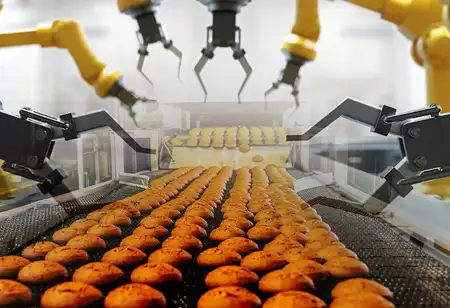

Thank you for Subscribing to Food Business Review Weekly Brief

The pet food industry is experiencing a wave of innovation and technological advancements that are revolutionizing the way pet food is manufactured. In this article, we explore the latest innovations in pet food manufacturing technologies, including advancements in extrusion processes, freeze-drying techniques, and the integration of automation and robotics in production facilities.
Extrusion Processes: One of the key innovations in pet food manufacturing is the evolution of extrusion processes. Extrusion involves the cooking, shaping, and drying of ingredients under high pressure and temperature, resulting in the creation of dry pet food kibble. Advancements in extrusion technology have led to improved efficiency, consistency, and nutritional quality in pet food production. Manufacturers can customize extrusion parameters to achieve specific textures, densities, and nutrient profiles, catering to diverse pet preferences and dietary needs. Freeze-Drying Techniques: Freeze-drying, also known as lyophilization, is another innovative technique gaining traction in pet food manufacturing. This process involves freezing food ingredients and then subjecting them to low pressure, causing the frozen water to sublimate directly into vapor without passing through a liquid phase. The result is freeze-dried pet food with preserved nutritional integrity, enhanced flavor, and extended shelf life. Freeze-drying retains the natural shape, color, and aroma of ingredients, making it a popular choice for premium and natural pet food formulations. Automation and Robotics: Automation and robotics are revolutionizing the efficiency and precision of pet food manufacturing processes. Automated systems handle tasks such as ingredient mixing, portioning, and packaging, reducing human error and ensuring product consistency. Robotics play a crucial role in handling and inspecting finished products, optimizing production line speed, and enhancing overall quality control. The integration of smart sensors, data analytics, and artificial intelligence further enhances production efficiency and predictive maintenance in pet food facilities. Advantages of Innovations: These innovations in pet food manufacturing technologies offer several advantages. Firstly, they enable manufacturers to meet the growing demand for customized and specialized pet food formulations, tailored to specific dietary requirements and preferences. Secondly, advanced manufacturing processes ensure product safety, quality, and traceability throughout the supply chain, fostering consumer trust and confidence. Thirdly, innovations contribute to sustainable practices by optimizing resource utilization, reducing waste, and minimizing environmental impact. Future Trends and Developments: Looking ahead, the pet food industry is poised for continued innovation and evolution. Future trends may include the integration of biotechnology for nutrient enhancement, 3D printing for personalized pet food solutions, and blockchain technology for transparent supply chain management. Additionally, advancements in packaging materials and sustainability practices will play a pivotal role in shaping the future of pet food manufacturing. Conclusion: In conclusion, innovations in pet food manufacturing technologies are driving a paradigm shift in the industry, elevating standards of quality, safety, and sustainability. From extrusion processes and freeze-drying techniques to automation and robotics, these advancements empower manufacturers to deliver nutritious, flavorful, and responsibly produced pet food products. As technology continues to evolve, pet owners can expect a new era of pet nutrition that prioritizes innovation, customization, and the well-being of their beloved companions.